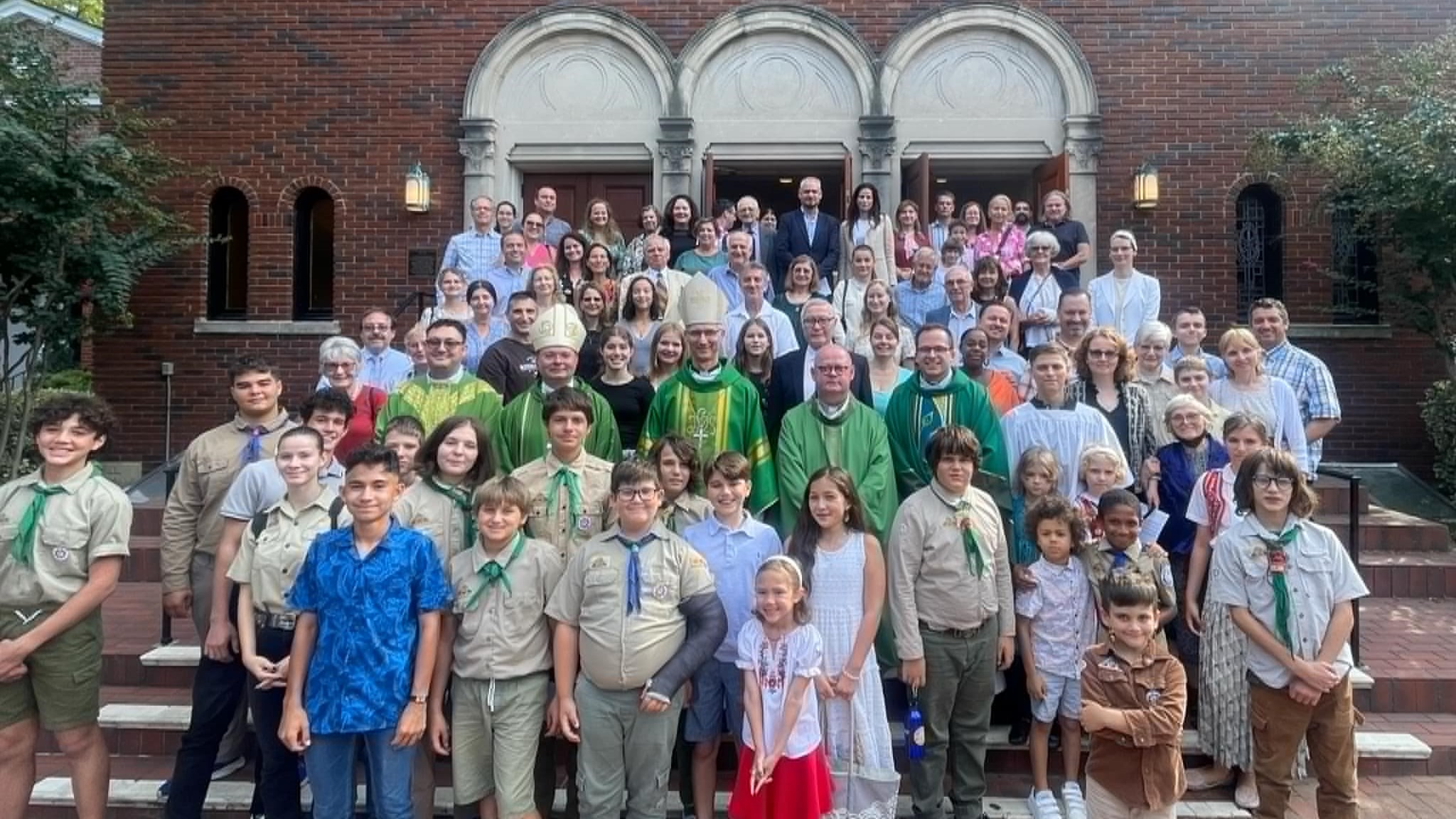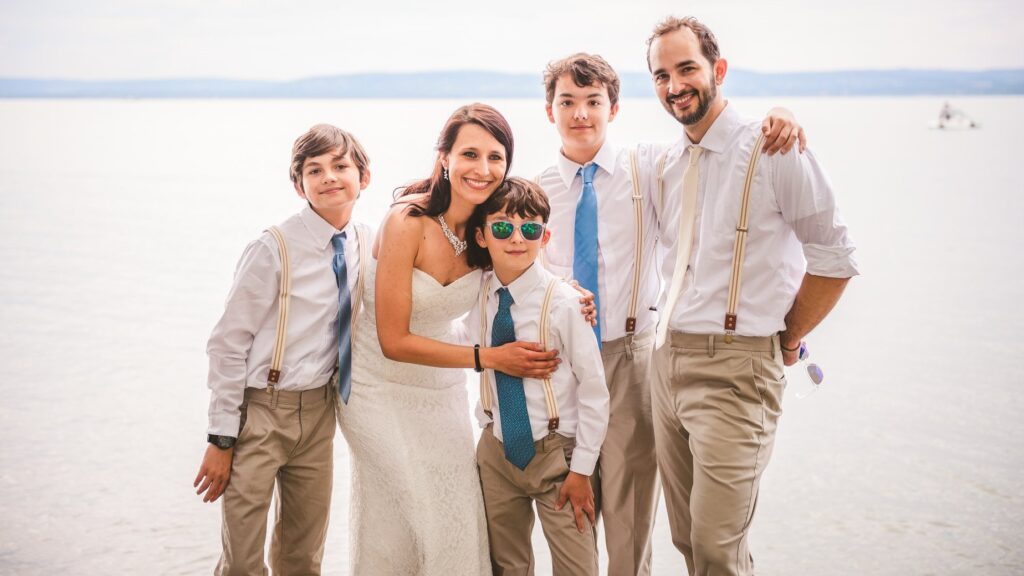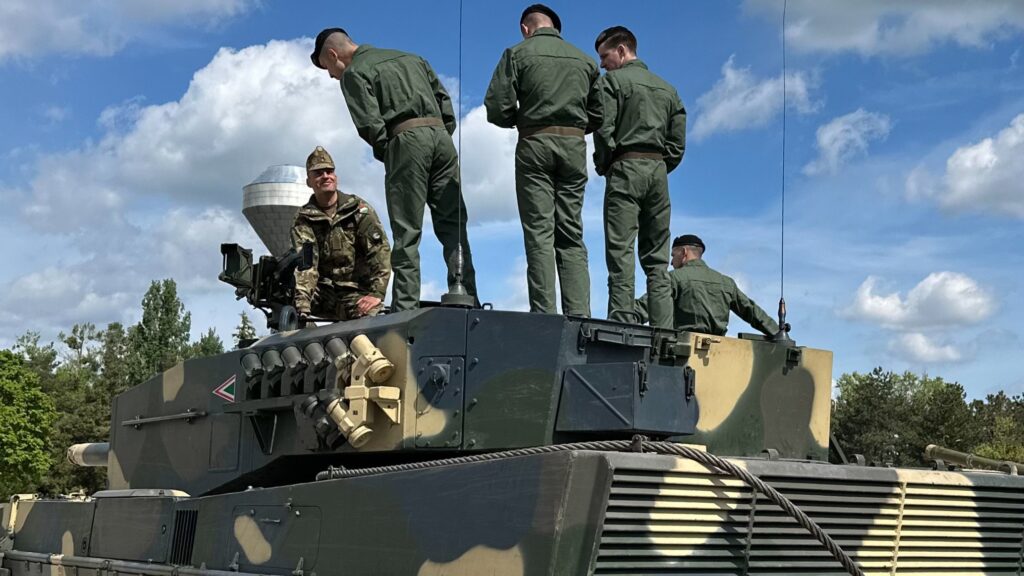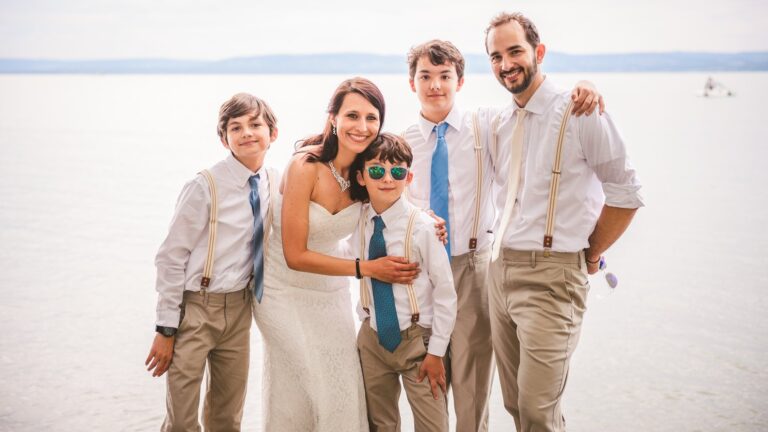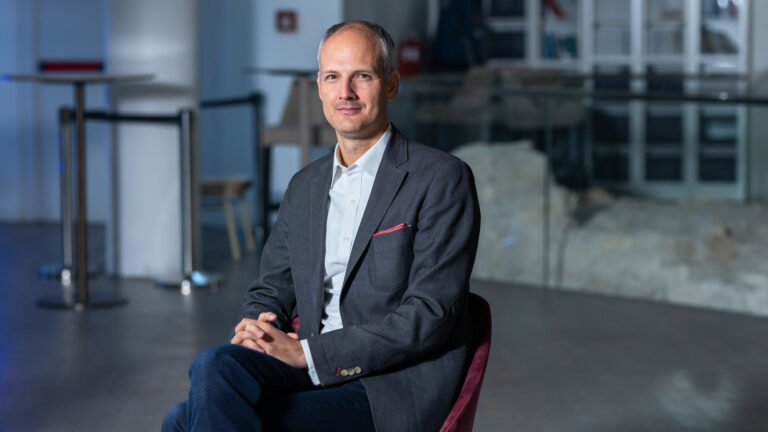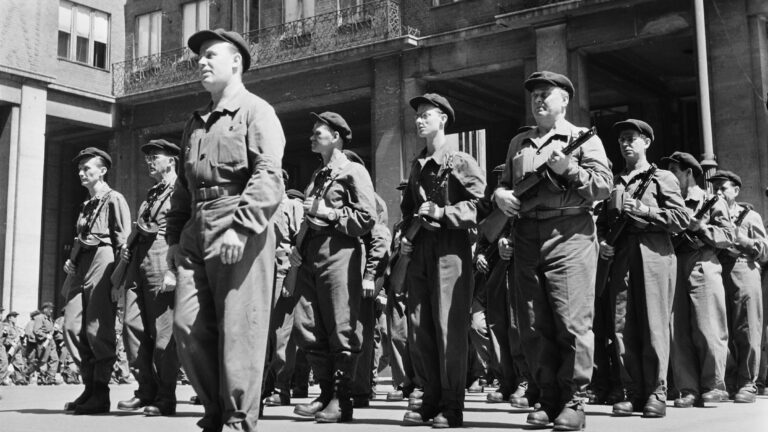Éva fled from Kolozsvár (Cluj, Romania) with her husband and their daughter in 1969; their son was born in an Austrian refugee camp shortly afterwards. Their Maryland home became, in 1975, the first base for the local Hungarian scout troop, which they actively supported as scout parents. A Hungarian church was never built in Washington, D.C., but thanks to the nearby universities, a Catholic priest was usually available to hold Masses in Hungarian. When the previous community leader retired in 2006, Éva, in collaboration with Zsuzsa Takács, restarted the organization. Although it flourished, ensuring the availability of a Hungarian priest remains an ongoing challenge.
***
When and how did you come to America?
When we left Kolozsvár in March 1969, with my husband, Árpád, and our one-and-a-half-year-old daughter, Beáta, I was seven months pregnant. Since Romania’s Communist dictator, Ceaușescu, had refused to send troops to suppress the Prague Spring movement in 1968, it had become relatively easy for Romanian passport holders to cross the border into Austria. Practically everyone in Romania knew this and we realized this was our only chance to flee as we knew: they’d never let us go to visit other countries with two children and we never thought of leaving without them—while we were both increasingly nagged and pressured to join the Communist Party, which we wanted to avoid at all cost.
We succeeded and arrived in Vienna, Austria, on 14 March. We ended up in the refugee camp in Traiskirchen, Austria, where our son Laci was born prematurely in April 1969. I had relatives living in America whom we last saw in the summer of 1956, and we contacted them when we arrived in the U.S. in June 1969 and stayed for a few months near Boston with them. By the end of that year, we moved to Maryland. Aside from three years spent in Venezuela between 1976 and 1979—due to my construction engineer husband’s work—we’ve been living here ever since. I was in my forties when I started university. I worked as an accounting manager for 23 years for a five-building apartment complex and retired in 2010.
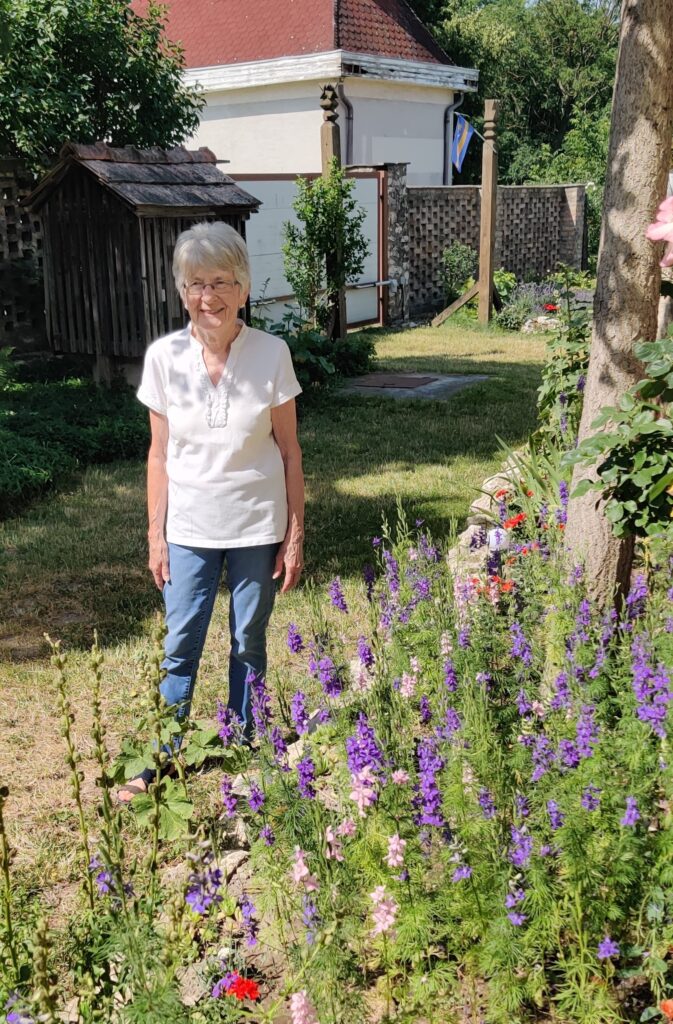
How did you get involved with the local Hungarian community?
Soon after we moved to the Washington, D.C. area, we learned that thanks to the Piarist fathers, who arrived at the Catholic University in the early 50s, a Hungarian Mass had been held on the third Sunday of every month since that time. When we arrived, the Hungarian Catholic community in the area consisted of about 100–150 individuals. We differ from other diaspora areas in the U.S.: no blue-collar workers came here—mostly intellectuals, mainly diplomats, university professors, scientists, and professionals in finance and healthcare. There weren’t many of them, and they didn’t feel the need to build a dedicated Hungarian church. However, they always had Hungarian priests available, thanks to the Catholic University, Georgetown University, and others in Baltimore. For example, Piarist priest Father József Bátori regularly came to Washington, D.C., to celebrate Mass in Hungarian and give literary lectures. Initially, the monthly Hungarian Mass was held at St. Patrick’s Church, later at St. Dominic Church, and then at St. Mary, Mother of God Church. As of 1999, Father István Mustos (from Passaic, New Jersey) and Father Domonkos Csorba (from New York) visited alternately, but they found travel harder and harder due to their age. In 2005, when two young Franciscan priests arrived in New York from Budapest, Hungary, our Mass was assigned to Father Ágoston Bagyinszki.
That’s the year you took over the leadership of the community. What happened?
During the Advent Mass in 2005—upon Father Ágoston’s second visit—the previous community leader, Cecília Bros, announced that she was retiring and moving to North Carolina and that the Hungarian Masses would be discontinued. I had never aspired to lead a community, but I thought: ‘This can’t happen.’ It had existed for 50 years, and now, suddenly, it can’t just stop, since we even had a priest who had confirmed he would keep coming if needed. I asked my friend Zsuzsa Takács, an active scout mom and the bookkeeper for many Hungarian organizations, whether she’d help me continue. She agreed, so I asked Cecília for the community’s contact list. ‘I’ll give you the list, but not the money,’ she replied. We started with an empty bank account, but with faith that we’d survive. We felt the Holy Spirit was hearing our prayers, and it seemed to be watching over us ever since. The restart was not without obstacles. The new German pastor simply disliked Hungarians and no longer allowed us to use his church for Hungarian Masses. Within a month, however, through one of our members, we secured a larger chapel in the lower church of the Basilica of the National Shrine of the Immaculate Conception. By February 2006, regular Hungarian Masses resumed—we missed only one month. Thankfully, people returned as the site was easily accessible.
…and that’s the largest Catholic church in America!
Yes, but I don’t think we initially grasped that. We were just happy to have a place. The Immaculate Heart of Mary chapel isn’t separated by a full wall from the next small chapel, so during major holidays, over 50 people could attend. That became our home for Mass until the COVID-19 pandemic hit in March 2020.
After a couple of months in 2006, we had also secured a classroom at the Catholic University for our post-Mass gatherings, and we duly acquired a tax number as a nonprofit organization with the name St. Stephen of Hungary Catholic Community of Washington. On paper, I became secretary, and Zsuzsa was treasurer—we don’t have a president. Later, Edit Sayko joined us; the three of us managed everything. Edit, a teacher and graphic artist, had a good voice and sang in choirs—she made flyers and sang at the Mass when we had no cantor. Previously, we didn’t have summer Masses, but during our tenure, we organized them too, to avoid long breaks.
Have you ever considered having more frequent Hungarian Masses?
The monthly Mass is a 70-year-old tradition, and besides the Hungarian Mass, everyone has their own American parish that they attend weekly. The Shrine is a place of worship and pilgrimage, not a parish church with a parish registry, thus there are no baptisms, first communions or weddings, events that are entered in the In 2007, Father Ágoston was accepted into the Catholic University’s PhD program, thus we had a ‘permanent’ priest for nine years. When he finished his studies and returned to Hungary in 2015, the question arose again: what next?
Was the consecration of the Hungarian chapel of help in this regard?
The Hungarian chapel of the shrine, consecrated in August 2015, didn’t change the fact that we were left without a Hungarian priest at the time. Officially, we have no connection to the Hungarian chapel—it was established through Father Barnabás Kiss, a Franciscan from Detroit, MI, who is the Episcopal Delegate for Hungarians living abroad. I personally was not present at the consecration ceremony, because we’ve been spending summers in Hungary since my retirement. But we are its usufructuaries; we’ve prayed the rosary there every first Friday for years. I also know that official delegations from Hungary often visit the chapel. This February, for example, we ran into Minister Péter Szijjártó’s delegation, and a Mass was being celebrated there at his request.
Returning to the situation of the community: how did things evolve?
Father Richárd Bóna, who served in Cleveland, OH, studied here at the Catholic University from 2015 to 2017, during which time he celebrated Masses for us. Later, the then 95-year-old Jesuit Father László Őrsy helped out. I met him thanks to Father Ágoston; we quickly became friends. Whenever we met, he always asked about ‘our Hungarians’. After both Fathers Ágoston and Bóna left, I complained to him: ‘Father László, we have no priest…’ He replied: ‘I no longer drive, but if you drive me to the Shrine and back, I will help you.’ Meanwhile, we discovered Father Stefan Megyeri, a seminarian at the time. His father was a Hungarian 56er, and he came from Germany to Washington, D.C. to study. He was ordained in the summer of 2019. Occasionally, he also took on celebrating our Hungarian Masses, as did Msgr. József Forró, a Vatican diplomat assigned to Washington, D.C., in 2018. Our prestige at the shrine increased greatly when Father Forró arrived with the Vatican embassy’s Fiat 500—which amazed everyone—and it turned out he was coming to us! (laughs)
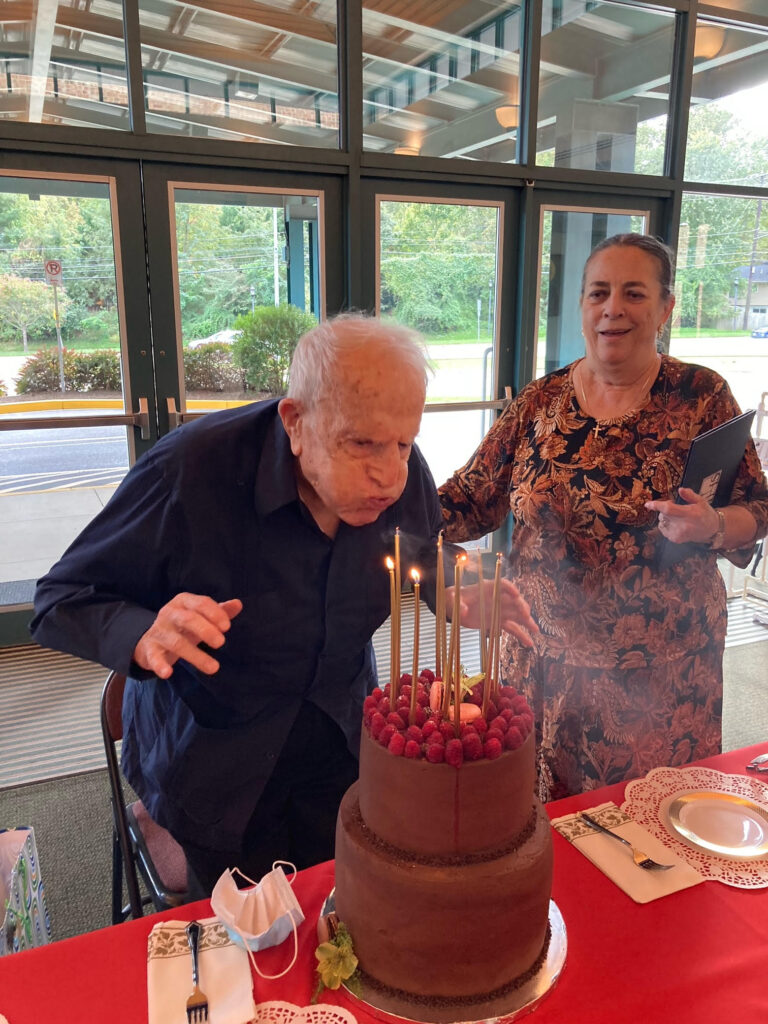
What happened after the pandemic broke out in 2020?
After Father Stefan was assigned to the St. Elizabeth Church in Maryland in 2019, he kept asking why we didn’t move there as well. Our answer was that people were used to the chapel, it was easily accessible, so we wanted to stay. But when COVID-19 hit, and the churches closed, then reopened, we decided to move to the larger church rather than stay in the small chapel, where people wouldn’t have returned, because strict distancing rules couldn’t be followed. Some still drifted away, but at least people came. We are still there. Soon after, Father Stefan was transferred again to a 100-year-old small Catholic church in Georgetown as apostolic administrator, effectively a parish priest. He is alone, without help, but still comes to celebrate Hungarian Masses for us. At the same time, we can use his new church for special occasions, like long festive Masses followed by agape meals. We don’t have to rush, because there’s no American Mass held afterwards, so it’s easier to hold first communions or bishop visits there. Thus, we now have two venues, while keeping contact with the shrine, too, regularly donating a symbolic sum, just in case we might need the chapel again someday.
So, is the Hungarian priest situation stable now with Father Stefan?
No, we definitely need an assistant priest because Father Őrsy has passed away, and Father József Forró was reassigned, so there is no Hungarian priest nearby. If something comes up for Father Stefan, there’s no one to turn to. Priests from New York and New Jersey no longer come—they seem to be too far and too busy. Following advice from Zsuzsa Fekete, the Hungarian community diplomat in Washington, D.C., in 2024, we tried to invite someone through the Kőrösi Csoma Program. They accepted our request, but ultimately sent Kata Szivós, a young, talented dancer who was a great resource for other Hungarian organizations in the area, except us…We could have provided accommodation and meals for a priest, as Father Stefan has a guest room, and the person could have helped at the parish…
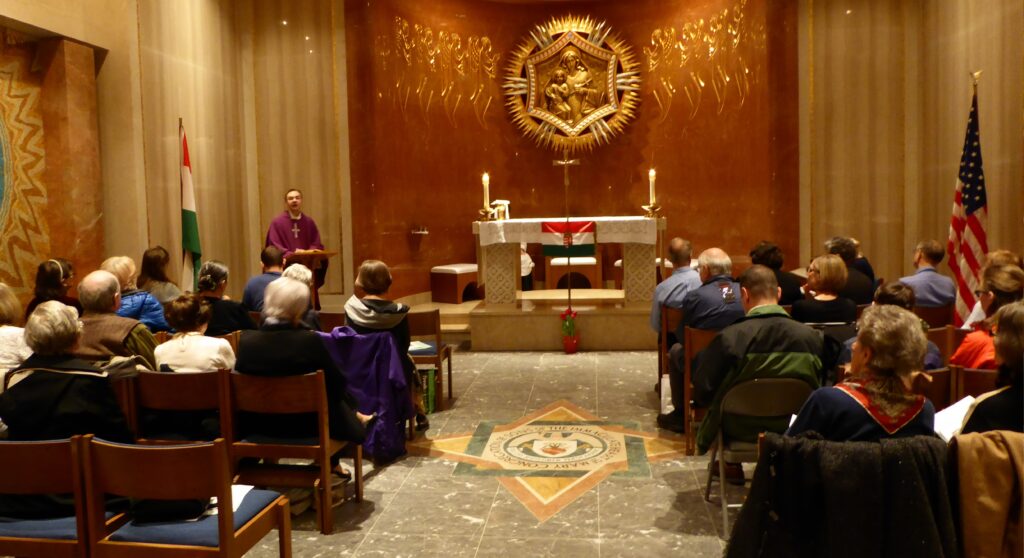
That plan didn’t work out, but meanwhile, we found someone else. A dear friend working at the Vatican Radio’s Hungarian department knew a priest from the Bácska district of Serbia, Jovicic Goran, a canon lawyer teaching at a seminary in Maryland. His mother is Hungarian, he speaks our language, and he happily agreed to come and celebrate Mass when available. And very importantly, he hears confessions in Hungarian, unlike Father Stefan, who doesn’t speak our language well. He started learning Hungarian here in America because his father didn’t teach him. He writes his homilies in English, translates them, sends them to a teacher in Pécs, Hungary, who reviews them, and he reads the final version to us. When some complained about his pronunciation, I asked him to give me the written text so I could email it afterward to the mailing list. People are happy with it. Parishioners contribute to the table set for agape every time. We have a volunteer cantor, one of our enthusiastic members, who posts a photo report to the community list after Masses about the number of attendants, readers, and a short summary of the homily. New parishioners are welcomed, and a warm, friendly atmosphere prevails.
Still, the fact is that we’re not on the Hungarian American Catholic diaspora’s map. We’re not a parish; even Bishop Cserháti said: ‘You are just a society’, meaning we can’t have any real claim on the Catholic Church. They don’t pay much attention to us; Father Barnabás Kiss and I talk only once or twice a year. When church delegations from Hungary visit Washington, D.C., they don’t come directly to us; however, we benefit anyway, because many more people attend our Masses during those times. I’ve gone through the priest issue thoroughly, speaking to multiple Hungarian office holders of the Catholic church, but seemingly, there’s no solution. Unless by some miracle another Hungarian priest comes here to study, we won’t have a Hungarian priest even temporarily.
Given this, what do you think is the future of your community?
To answer that, we need to go back a bit to the time when Jesuit Father Tamás Forrai served in Toronto, Canada, and when Pope Francis proclaimed the synodal church in 2023. We are not a parish, so officially we couldn’t participate in the process, but we thought, why not use its spirit? Since the COVID-19 pandemic, fewer and fewer have come to Hungarian Mass, so we needed to do something. Father Forrai had Zoom talks with small groups, including us, and once asked: ‘Do you have a vision? Do you know what you’ll be like in five years?’ It’s a very difficult, but extremely important question. I felt overwhelmed, but in January 2024, we began such a conversation with the community: ‘Do we see ourselves in five years? We know assimilation will happen eventually, but do we want it to happen within a year? Do we want to change this dynamic, and if so, what can the community offer its members, and what can the members offer the community?’
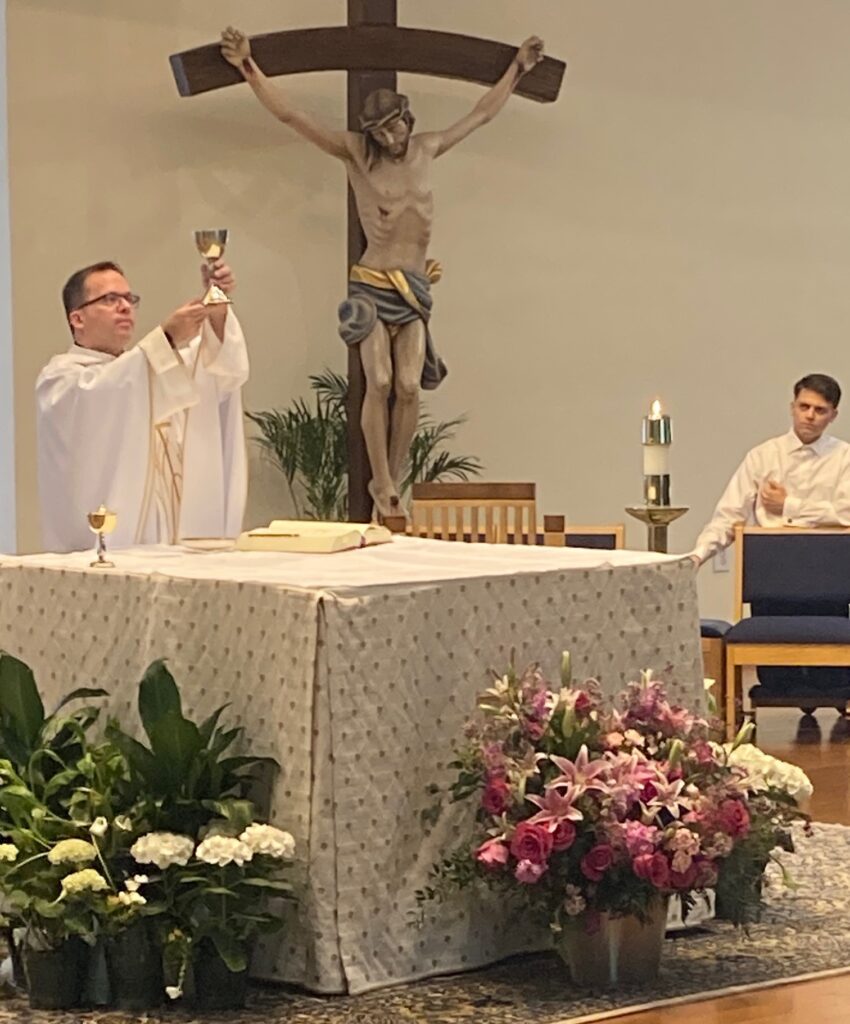
First, we admitted there is a need to change officers. All three of us are getting old, and both Edit and Zsuzsa left the trio around the same time. Zsuzsa had a serious car accident and couldn’t return. Edit retired, had health issues, and began spending more and more time in Hungary. Finally, only György Cili (and I) remained, whom I invited a few years ago to join the three of us, to participate in our meetings, so she could learn what was going on. In the summers, when I’m not here, everything falls on her. She was born in Transylvania, and her husband is also Transylvanian and Catholic. They have two scout children. She plays the guitar for us when needed.
Then, we admitted we need new ideas. For example, we decided to follow the practice of the Reformed church by instituting children’s activities during Mass. At that January meeting, a new couple showed up, and the wife, Gabi Balsa, is a kindergarten teacher. Since she volunteered, we have children’s activities, which is great, because young families started to join as well. I suggested that the young ones do the readings again. It makes the Masses more intimate, nice, and familiar; they prepare gladly, and their whole family comes. These small changes had visible, tangible results: attendance grew from an average of 35 to 60–70 per Mass. Last fall and this March, we even had events with 150 attendees. In September of 2024, we invited the two visiting bishops and the priest from Hungary to the back-to-school Mass at Father Stefan’s new church. The small church was full, followed by a big agape meal. So many good things are happening, but the Hungarian priest situation remains uncertain, and no one has yet volunteered to replace me either. Actually, a young scout father offered to help with IT tasks, which at my age I prefer not to learn. Cili is very capable and enthusiastic; we get along well. Nevertheless, she has two kids, a firefighter husband, a job, and lives almost an hour away, and has little time to spare. I’m retired, I can show up on weekday mornings to represent the community if needed, but she doesn’t have the time to do the same.
Among the 150 people mentioned earlier, the local Hungarian scouts were also present, right?
Yes. We have always had a close relationship with the local scout troop. For example, in the early days, it was always the scout parents who took care of the meal after the Masses. In fact, most of the scout families were Catholic, and the scout troop was actually established in our house. Father Pál Bolváry, a Pauline monk priest, was brutally imprisoned in Hungary for three years for his scouting activities and emigrated to the U.S. in 1972. He served at St. Anne’s parish in Pittsburgh, PA, and was a good friend of Dr. Spillenberg, who was then leading the community as head of the Mindszenty Society. Father Bolváry approached us and asked whether we were interested in starting a Hungarian scout troop—as he had founded one in Pittsburgh—and if there was a demand, he could help start one in D.C. as well. We replied to him that we weren’t sure—we didn’t really know what scouting was about. However, we asked around among Hungarian families, and we got positive answers. This is how we started it with four or five families in our own living room, in 1975. There was a high school senior, Keve Papp—currently living in Hungary—who had studied at the Hungarian high school in Burg Kastl, Germany, and knew all about scouting. He became our first, unofficial troop leader. The József Bátori Scout Troop No. 4 was officially registered in 1976. In the meantime, we moved to Venezuela, and by the time we returned in 1979, the group had developed into a fully-fledged troop. They were meeting in a scout grandmother’s basement, learning Hungarian folk dance, and involving adult scouts. They even needed a teacher, so I volunteered to teach Hungarian culture and history.
How is your current relationship with the scouts and other Hungarian institutions in the area?
I’ve supported the scouts even after our kids were no longer scouts. I’ve helped with judging at poem recital contests, and selling tickets at their bazaars, etc. My husband was always a supportive scout dad, driving the kids to camping trips, hikes, or Christmas caroling in the Washington, D.C. area, or even helping to raise maypoles for the girls. In the early days, scouts did the readings at Masses. We also had first communions. The current troop leader, Éva Dömötörffy, is Catholic and supports the strong connection between the Catholic community and the scouts. They join us for the school year opening Mass, Christmas, and first communion celebrations. Second- and third-generation family members often don’t speak their parents’ or grandparents’ language. Still, new families arrive due to the many fellowships, diplomatic missions, universities, financial institutions, and healthcare institutions in Washington, D.C. Yet, it’s often easier for families to go to their local American parish rather than drive 10–20 extra minutes to us, even though we have elderly people who drive an hour and a half to attend. I suppose we are not unique in this, it’s probably the case in most diaspora communities…
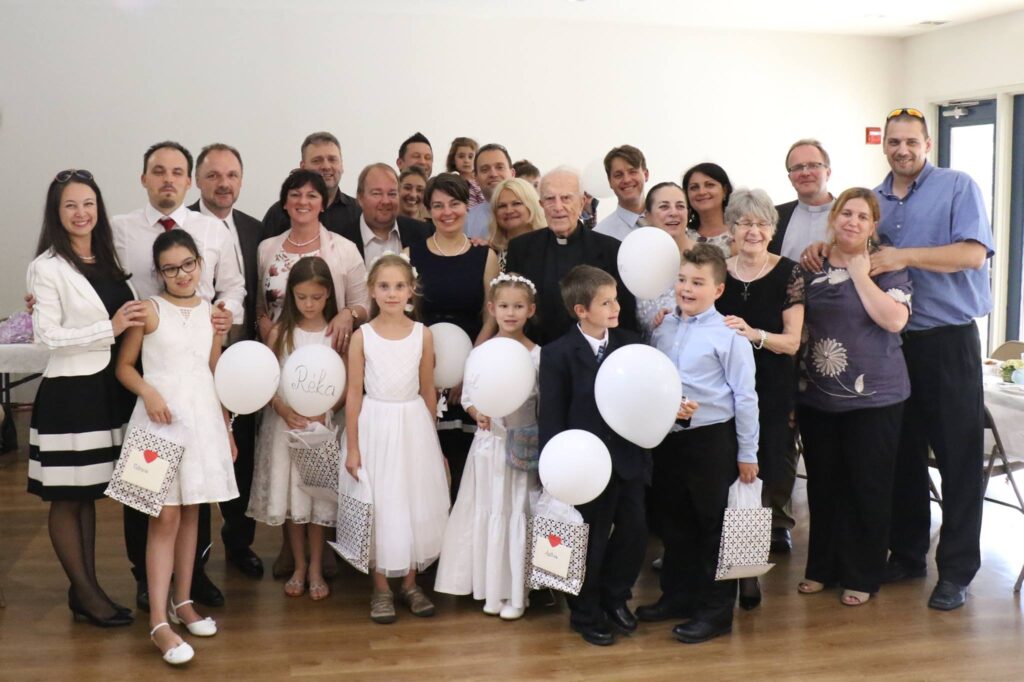
We maintain close relations with most of the Hungarian institutions in the Washington, D.C. area, including the Reformed Church, the scouts, the Kossuth Foundation, and the Embassy of Hungary. Our community is a member of the Hungarian American Coalition (HAC). Our friendly relationship with the members of the Reformed Church goes back decades. We take turns praying together in each other’s churches during the Week of Prayer for Christian Unity each January, and we also enjoy attending each other’s services.
Finally, could you share a few thoughts about the recently deceased Father László Őrsy, the oldest Hungarian Jesuit?
Around the early 2010s, Father Őrsy decided to donate part of his library to the Sapientia University in Budapest, and Father Ágoston offered to pack and send the books there. Once he asked me to come along. Father Őrsy lived at the Jesuit residence on Georgetown University’s campus, along with other professors. He had been a university teacher for 70 years and was well-known in that academic community. While we packed the books, we talked a lot. Later, I visited him alone a few times. Once, he even invited me to lunch. He always asked about the local Hungarian community, and when we needed it, he offered to help. Father Mustos used to come for weekends for small group retreats. Father Őrsy agreed to follow with this tradition…He loved those guided conversations and always had so much to say. A few years later, Zita Mirk, the community diplomat of the Hungarian Embassy at the time, joined the group only to announce that Father Őrsy would receive a national award on 15 March 2022. The event took place at the Kossuth House. Earlier, in 2021, we celebrated his 100th birthday at the after-Mass coffee social with champagne and cake. A very special memory of mine is from Christmas 2016. My mother had just passed away, and Father Őrsy offered a Mass in her memory at the chapel at Wolfington House for me and my husband.
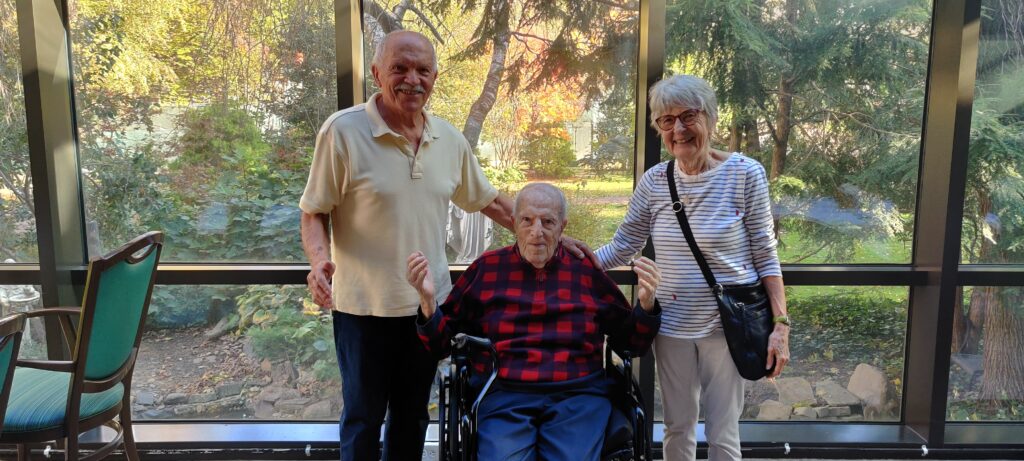
In January 2023, he was moved to New York as the Jesuit home at Fordham University was close to a hospital. When we first visited him there, he was happy to see us, talked a lot, reminisced about his years in Rome, and showed us old photos, some of which were face-to-face with popes. The next time we were able to visit him was on 30 March 2025, just days before his passing. He was nearly 104, he could no longer speak, couldn’t sit up, and barely ate. When we arrived, his face lit up—he seemed to recognize me. I told him we had brought with us all our prayers and love from Washington, D.C., and Hungary—I’m not sure if he heard or understood, he just looked at me, then at Árpád, and took our hands. He seemed to be ready to go.
Read more Diaspora interviews:

